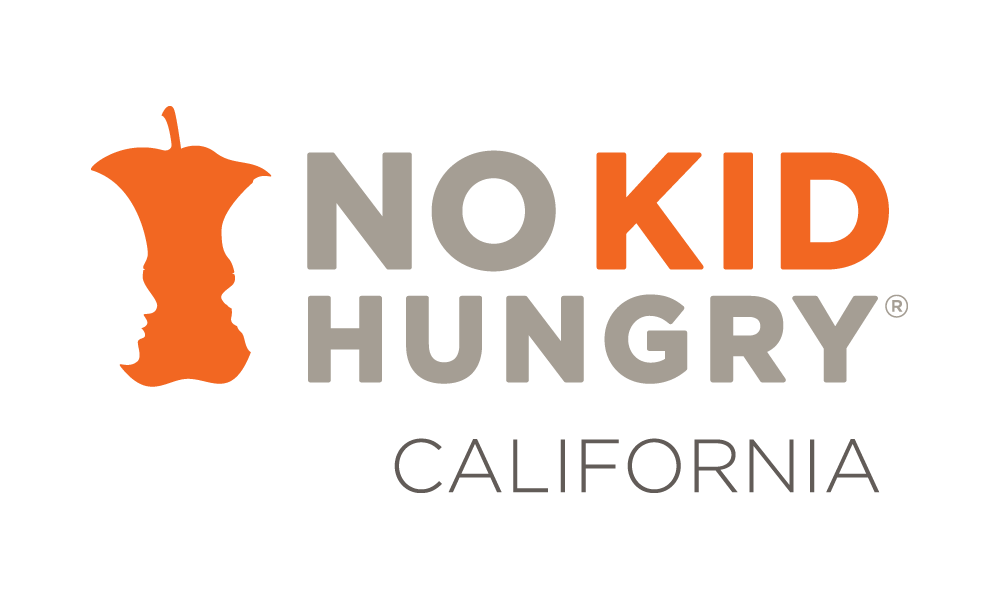Recap: 5 Takeaways from “Leveraging the Power of School Meals to End Child Hunger: Lessons Learned During COVID-19”
As students across the state are wrapping up another unprecedented school year, No Kid Hungry California hosted a virtual lunch and learn for Capitol staff and reporters to hear firsthand how school districts rose to the challenge of feeding kids during the pandemic. In a conversation led by chef Tanya Holland, school leaders discussed how they were able to adapt their meal programs to meet skyrocketing need and uncertain circumstances, and shared lessons learned that they hope to continue this fall and beyond to ensure every child has access to nutritious school meals.
You may also access the video recording here.
Here are five takeaways from the event:

Executive Chef
Brown Sugar Kitchen
1) School meals helped mitigate food insecurity during the pandemic.
COVID-19 hit California families fast and hard. Just months into the pandemic, some 1.8 million parents and caregivers in California said their children didn’t have enough to eat because their families couldn’t afford it. School meals were a critical lifeline. Even though school campuses closed to students in March 2020 to prevent the spread of COVID-19, school nutrition programs continued to provide meals through a variety of innovative delivery models, including grab-and-go pickups and meal delivery vans to serve rural neighborhoods.
“We at districts like Sac City understand that we can’t meet our student’s academic, social, and emotional needs if their basic needs aren’t met,” said Sacramento City Unified School District (SCUSD) Superintendent Jorge Aguilar. “For us that means alleviating hunger and ensuring that our students have access to fresh and nutritious food.”
“Over 70% of our students are either low income, English learners, foster or homeless youth … for many of our students, it’s the place where they receive love and support and of course they also receive nutritional support,” he continued. Superintendent Aguilar said that SCUSD has served more than 10.5 million meals since the beginning of the pandemic.

Superintendent
Sacramento City Unified School District
2) Flexibility and funding to adapt to the unique situations facing each school and school district allows them to serve meals in the way that works best for the local community.
This crisis made apparent what school leaders have long known to be true: Given the unique circumstances facing each school and school district, both funding and flexibility are critical to ensuring families get the meals they need. Many schools exhausted their nutrition budgets due to the increased cost of safely feeding kids during the pandemic, and costs are expected to remain high into the fall as students transition back to in-person learning.
“No Kid Hungry received tremendous support and was able to quickly and directly fund programs to our partners in the communities and to our school partners that really augmented the historical federal and state investments that were made to food nutrition programs,” said No Kid Hungry California Director Kathy Saile.
“Schools had to provide meals to their families in a lot of different ways,” she added. “Our school and community partners told us what they needed, we funded it and they did it.”
3) Serving school meals to all students plays an important role in promoting equity.

Director of Food & Nutrition Services
Pomona Unified School District
“We had a pandemic before the health pandemic, which was a pandemic around learning,” said Superintendent Aguilar. “We’re also very aware of the intersection of needs related to nutrition among our students and how we make sure that that’s part of a more robust multi-tiered system of support … We just did everything that we thought was necessary to remove as many barriers to food as possible.
“We’ve all been in a meeting where it’s right before lunch and we’re kind of hungry and we start to not pay attention and we lose focus – imagine students having that every single day,” Pomona Unified School District Director of Food and Nutrition Daryl Hickey added. “Sometimes we’re the only meal that they get.”
Aguilar continued, “I think removing barriers is how we increase and achieve an equity vision that we are so committed to. We have a long way to go, but as we look at ways to improve after this pandemic, I certainly hope that one thing we can do is expand on some of these policies to more easily connect our families and students to services and supports.”
4) Serving no-cost meals to all students helps reduce the stigma often associated with eating school meals and makes meals a resource for everyone – just like desks, chairs and textbooks.
Thanks to federal waivers that allow schools to serve meals to all students at no charge through the end of next school year and provide significant flexibility in how those meals are served, school districts have incorporated meals into daily on-campus life in a way that makes picking up a meal the default option for most students. Providing free meals for all students helps fight child hunger and advance equity by increasing school meal participation, ensuring no students gets turned away due to inability to pay, and supporting more streamlined meal service operations.
“We know that flexibilities – letting all children eat at no charge – that really works. So we’re very encouraged and energized by the debate around making school meals available at no charge to all kids. We think that will increase access, reduce stigma and decrease paperwork for families and schools,” said Saile.
“At the end of the day, we just want to feed the students – we just want to feed everybody,” said Hickey. “It does get rid of the stigma that has been attached with free and reduced-price meals and releases the barriers … The same way that a student doesn’t pay for their desk, for their books, for the electric bill – let us feed the students. Let us do this.”

California Director
No Kid Hungry campaign
5) School nutrition workers are unsung heroes who continue to do great work in real-time to feed kids.

Thank you!
The pandemic has devastated communities across the state, with millions of children facing hunger and poverty. School nutrition team members have been there for families, working tirelessly through the summer, weekends and holidays to make sure kids in California get the nutrition they need while learning from home. As students transition back into the classroom, school nutrition staff are working to ensure they can continue to serve meals safely now, over the summer and into next school year.
“We saw a real spike in increase in hunger and food insecurity at the beginning of the pandemic, and we also saw hunger heroes jumping in and mitigating that issue,” said Saile. “So while the spike was real high in the beginning, it is coming down again and that’s due to the incredible work of school nutrition service teams.”
“For so many of our families, they lost the connection that they had to our school campuses,” said Superintendent Aguilar. “But we were so committed to our work around nutrition that I’m very proud to say that what they didn’t lose was access to the food that we provide to them – and that’s thanks to an amazing and talented nutrition services team.”



